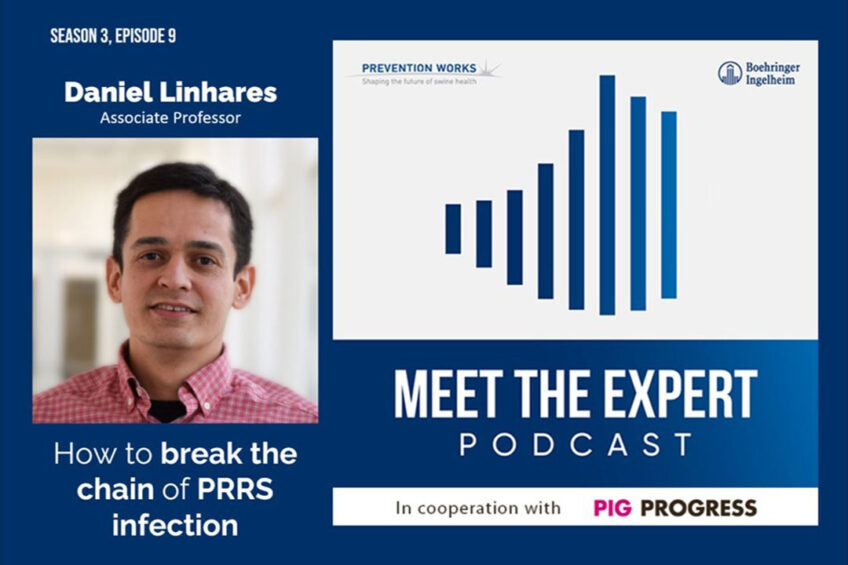Podcast: How to break the chain of PRRS infection

In collaboration with Boehringer Ingelheim, in this episode of ‘Meet the Expert’, global expert on PRRS virus, associate professor Daniel Linhares of Iowa State University, focuses on the classification of PRRS and how to break the chain of infection.
A “cloud” of various PRRS viruses in a single herd
The Porcine Reproductive and Respiratory Syndrome (PRRS) virus is one of the most ever-evolving viruses that we know of, said Linhares. He emphasises that there are various PRRS viruses and gives the example of a study done in 22 herds where all but 2 herds had up to 5 viruses present. The more diversity of the virus, the greater the impact on productivity, he said.
Ter Beek asks: “Is there a particular strain that you know of that producers and vets need to be very, very afraid of?” Yes, says Linhares, but the problem is that the answer changes over time and by region.
The 4 stages of disease development
Linhares notes that it is important that veterinarians establish the stages of PRRS development, adding that some farms establish as many as 12 stages.
For PRRS, he says, it goes beyond positive and negative – there are shades of positives and shades of negatives. He talks through the various stages, from stage 1, which he says is the worst-case scenario – the farm is positive, unstable and acutely infected, typically with many clinical and production consequences – through to stage 4 where there is no clinical consequence of PRRS from the breeding herd all the way to the finisher.
Ter Beek asks Linhares to talk about how pig producers or veterinarians can determine in which stage of development a PRRS virus is on a farm, and what tools are available to help them. He discusses monitoring (a monitoring surveillance system incorporating production monitoring and diagnostic monitoring), as discussed in the previous ‘Meet the Expert’ episode. He also touches on there being specific guidelines and criteria on how to transition from one stage to the next, and how to remain in that stage. Ter Beek also asks how quickly a herd can move from one stage to another.
Grower-finisher pigs and airborne infection risk
Linhares talks about grower-finisher pigs being a significant source of PRRS infection and how they amplify infection. He also discusses the risk of airborne infection and discusses other sources and risks of infection based on outbreak investigations. He highlights the role of people in infection risks. Finally, he goes through 4 methods or approaches to overcome PRRS challenges: vaccination, the pig and people flow, coordinated bio-management, and MOSS.







